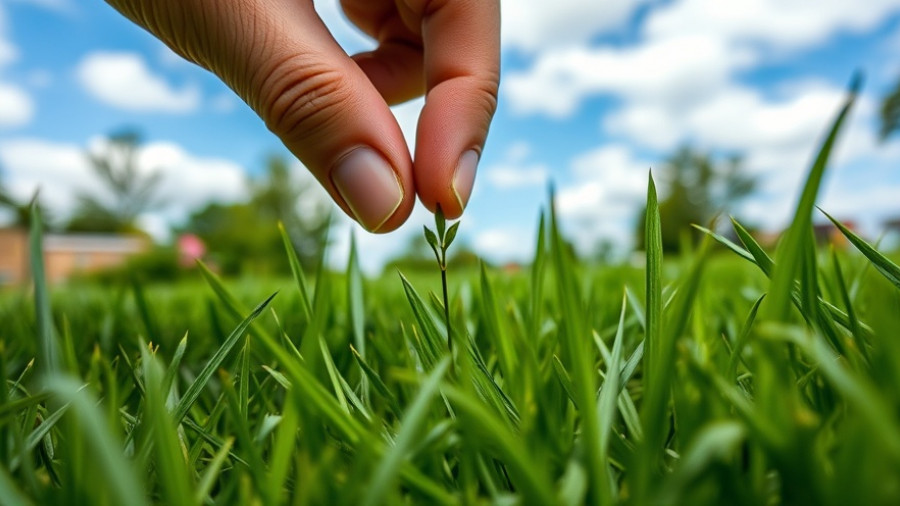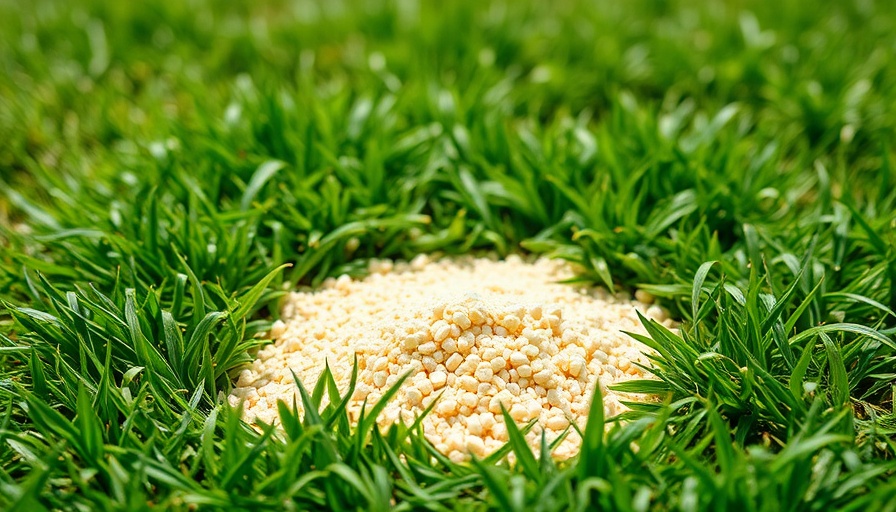
Unlock the Beauty of Your Garden: Easy Hydrangea Propagation
For many homeowners and gardening enthusiasts, the vibrant hues and distinctive shapes of hydrangeas can transform any garden into a floral paradise. But what if you could not only enjoy these beautiful shrubs but also propagate them effortlessly right from your own backyard? Recently, we explored a video tutorial from horticulturist Devon Wallen, showcasing an easy method for propagating hydrangeas. This process can be a rewarding endeavor, offering the chance to expand your garden without the added expense of purchasing more plants.
In 'Propagate HYDRANGEA the Easy Way - Make Free Plants', the discussion dives into straightforward techniques for hydrangea propagation, inspiring us to break down its key ideas while adding our unique perspectives.
Why Propagate Hydrangeas?
Hydrangeas are not only alluring but also versatile plants that can thrive in various settings. Propagation offers the chance to create multiple new plants from a single specimen, allowing you to enhance your landscaping without breaking the bank. As homeowner demographics indicate, many individuals aged 40 to 65 are looking for DIY projects that provide both economic and aesthetic benefits. Furthermore, propagating plants can lead to increased biodiversity, promoting a healthy ecosystem right in your garden.
The Perfect Time for Propagation
Timing is crucial when propagating hydrangeas, as Devon emphasizes that the best window for softwood cuttings typically lies between May and June. During this period, fresh growth from the plant is optimal for taking cuttings, ensuring a higher success rate for rooting. As you explore landscaping projects, aligning your propagation efforts with the season can ensure that the temperature and moisture levels are both conducive to the new plants' development.
Step-by-Step Process for Hydrangea Propagation
Devon outlines a simple and effective approach to propagate hydrangeas that any DIY enthusiast can follow:
- Gather Materials: You will need sharp pruners, a container of water, rooting powder, and a mix of potting soil and vermiculite.
- Take Cuttings: Look for fresh, green stems approximately 4 to 6 inches long, ensuring you cut just above a leaf node.
- Prepare Cuttings: Remove lower leaves, cut the remaining leaves in half, and ensure the cut end is dipped in rooting powder to stimulate growth.
- Plant Cuttings: Make holes in your soil mixture containers with chopsticks and place the cuttings inside, gently pressing the soil around them.
- Create a Mini Greenhouse: To maintain humidity, cover the container loosely with a plastic bag. Ensuring that your new plants have a stable environment greatly increases survival rates.
By following these steps, you can successfully grow new hydrangea plants and raise your gardening game.
Monitoring and Maintenance of Your Cuttings
Once planted, it's vital to keep a close eye on your cuttings. According to Devon, checking for wilting and adjusting moisture levels by trimming leaves can make a substantial difference in your plants' health. This thoughtful attention to detail is essential for successful propagation.
Insights from the Greenhouse Experiment
The video highlights an interesting experiment where some cuttings were kept in a mini greenhouse while others were left exposed. The results were clear: the greenhouse cuttings thrived while the others perished. This practical observation reinforces the significance of controlled environments in gardening success, a valuable lesson for aspiring gardeners.
Planning for Success in Your Landscaping Projects
As you venture into propagating your hydrangeas, consider incorporating additional elements that fit your local landscape criteria. Using native plants provides resilience and compatibility with local ecosystems, enhancing overall garden health. Homeowners in North Carolina, for instance, might explore xeriscaping tips to create low-maintenance landscapes that conserve water and beautify their properties.
Conclusion: Start Your Hydrangea Journey Today!
Hydrangea propagation is not just about filling your garden with beautiful blooms; it's also about embracing the art of gardening and nurturing nature. By following the steps outlined in the tutorial by Devon Wallen, you can create stunning hydrangeas at a fraction of the cost. As the gardening season unfolds, consider this handicraft venture a way to cultivate not only plants but also a greener planet. So, gather your materials, prepare for the bloom of a lifetime, and delve into the fulfilling world of plant propagation!
If you found this article helpful, consider sharing your experiences or exploring more DIY gardening projects that can enhance your home’s landscape.
 Add Row
Add Row  Add
Add 




Write A Comment